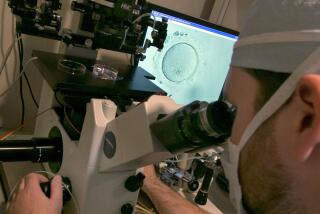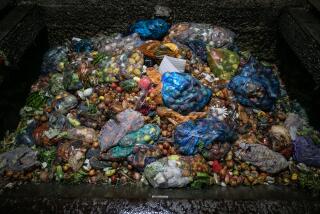With Clones Come Complex Concerns
After scientists in South Korea announced they had cloned human embryos and used them to create lines of stem cells that were genetic copies of sick or injured patients, concerns began to arise that the U.S. was losing ground in an important area of medical research.
Many physicians and patients believe the research could lead to cures for diseases such as Alzheimer’s and Parkinson’s, but others are troubled by the need to sacrifice embryos to produce stem cells.
Democrats and Republicans are supporting a bill pending in Congress that would loosen the Bush administration’s restrictions on federal funding for stem cell research, though the president said Friday that he would veto the measure. Meanwhile, California and other states are moving forward with plans to promote research in the burgeoning field of regenerative medicine.
Here is a look at some of the issues involved:
Question: What was the breakthrough in South Korea?
Answer: Researchers at Seoul National University demonstrated that it was possible to create stem cells tailored to individual patients with spinal cord injuries or genetic ailments such as juvenile diabetes.
Advocates of the research believe patient-specific stem cells could be used to grow replacements for faulty body parts and develop therapies for a range of diseases. Scientists believe such genetically matched material would be likely to succeed in a transplant because there would be little danger of tissue rejection.
Q: How did they do it?
A: Researchers removed the genetic material from eggs donated by healthy women. Then they replaced it with DNA from the patients and prompted some of the eggs to grow into embryos. After five days, the embryos were transferred into culture dishes, where 11 of them developed into stem cells that were genetic matches of their DNA donors.
The procedure is called therapeutic cloning because the embryos are created using cloning techniques rather than through traditional fertilization.
Q: How are these stem cells different than the ones in the U.S.?
A: Most of the embryonic stem cell lines available in the United States were derived from surplus frozen embryos created in fertility clinics.
In addition, when scientists isolated the stem cells, they used animal cells to nourish them and encourage them to grow. They now believe the stem cell lines are contaminated and would trigger an immune response if transplanted into humans. The South Korean team was able to eliminate most, but not all, of the animal cells used in the process.
Q: Could the South Koreans’ approach be used to produce a cloned baby?
A: The general approach has been used to clone animals, including cats, cattle and horses. But scientists have so far failed in their efforts to clone primates.
Hwang Woo-Suk, leader of the South Korean research team, said this week that he believed “biologically, it may be impossible” to clone a baby. Many prominent biologists agree.
Q: Are there different ethical issues?
A: Some people find stem cells derived from excess embryos from in vitro fertilization to be less ethically troubling, since the embryos would have been discarded anyway.
Others, including many bioethicists, believe that stem cells derived from the South Korean team’s technique are ethically more acceptable because the cloned embryos have no potential to become a baby. Thus, no life is lost in harvesting the stem cells.
Q: How long before stem cell therapies are widely available?
A: No one knows for sure, but scientists have cautioned that there are no cures right around the corner. Hwang and others have said that it will be years, possibly decades, before therapies are widely available.
Q: Could this research be done here?
A: Yes, but it couldn’t be funded by the National Institutes of Health, the National Science Foundation or any other federal source.
California’s Proposition 71 specifically permits funding of research involving therapeutic cloning. Zach Hall, interim president of the California Institute for Regenerative Medicine, has said that such experiments could be among the first to be funded when the new state agency begins awarding millions of dollars in research funds. But some state lawmakers have proposed legislation that would delay any plan to allow women to donate eggs for stem cell research.
Times staff writer Megan Garvey contributed to this report.







